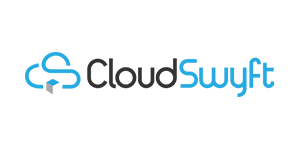Microsoft Future Ready: Introduction to Python Programming
Posted 2 years 5 months ago by CloudSwyft Global Systems, Inc.
Python is the most requested skill in data science job ads today. The demand for these skills grew 435% from 2019, according to Forbes, and is ranked in the top 3 for programming languages by the IEEE Spectrum.
This course provides a thorough introduction to Python - the programming language used by Instagram, IBM, Netflix, and Facebook. You’ll build knowledge specific to data science applications, then dive into the world of data visualisation.
Start with the basics of Python programming
You’ll learn basic arithmetic and variables and basic syntax, and how to create and manipulate regular Python lists.
You’ll discover how to build and handle data structures such as Python lists, NumPy arrays and Pandas DataFrame, and perform interesting calculations. You’ll also be introduced to Python functions and control flow.
Build meaningful data visualisations
Learn how to create stunning data visualisations with Python. You’ll learn how to create and customise plots on real data, and create presentations based on your own data. This is the next key step to getting buy-in on your data analysis by ensuring that you can communicate it to a diverse audience.
By the end of the course, you’ll be better equipped to start a career in Python programming - ready to offer employers the most in-demand skill in data science.
This course is designed for students and professionals who aim to start their careers in Python programming.
This course is designed for students and professionals who aim to start their careers in Python programming.
- Explore Python language fundamentals, including basic syntax, variables, and types
- Create and manipulate regular Python lists
- Use functions and import packages
- Build Numpy arrays, and perform interesting calculations
CloudSwyft Global Systems, Inc. - Latest Courses
Data Visualisation Fundamentals for Absolute Beginners
- 2 weeks
- Online
Essential Mathematics for Data Analysis in Microsoft Excel
- 3 weeks
- Online
How to Use Microsoft Excel for Data Analysis
- 2 weeks
- Online
Microsoft Excel: Advanced Data Analysis and Visualisation
- 3 weeks
- Online
Microsoft Power BI: Advanced Data Analysis and Visualisation
- 4 weeks
- Online

